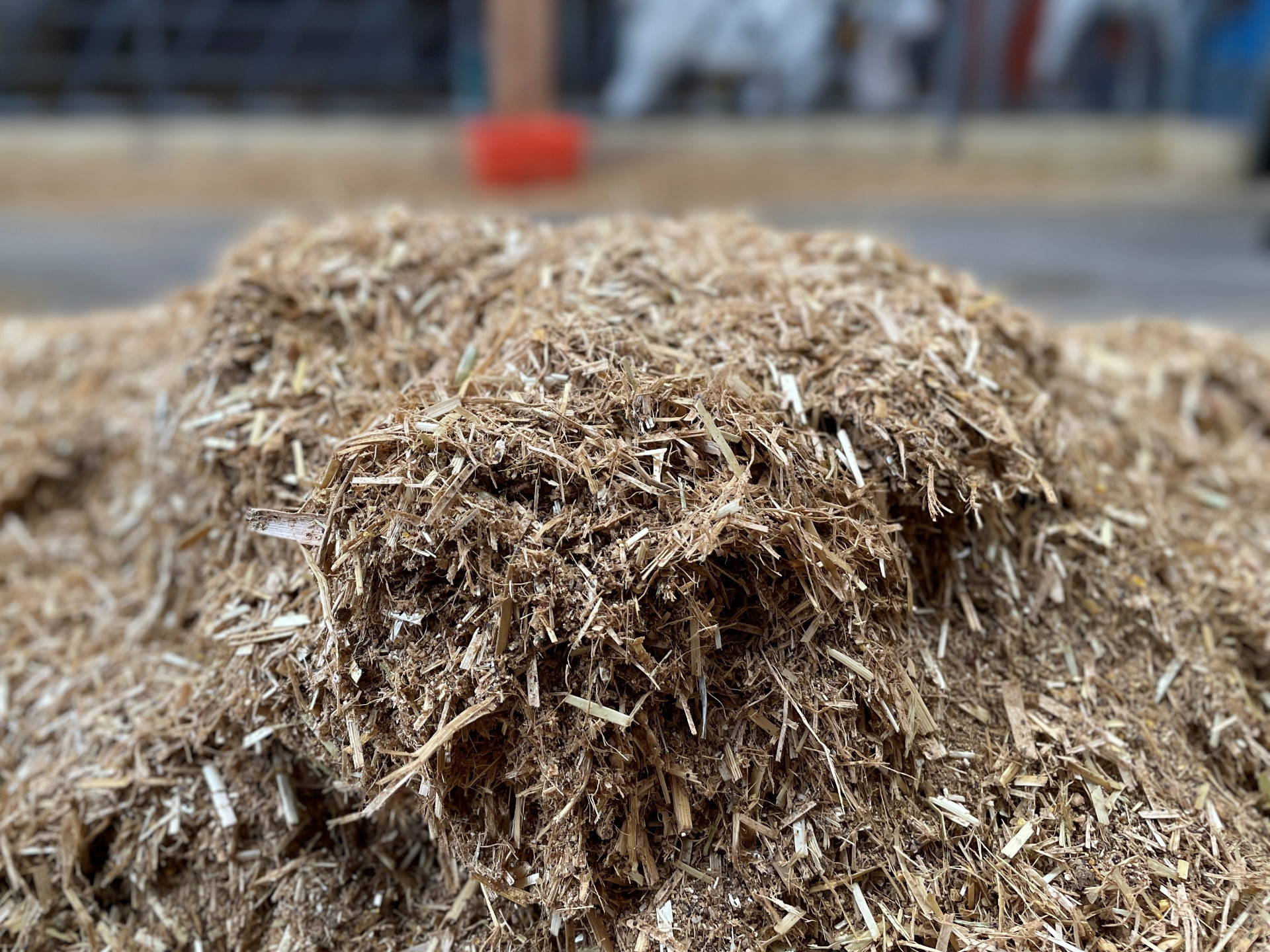The best concentrate for calves ... – concentrate part 3
13. Juni 2022 — General Information, Calf Feeding, Calf management — #Work management #Calf cereal #Concentrated feed #Management #Pellets #Dry TMR #Growth #GainsWhich type of feed is the best?
Needless to say, it always depends on the raw materials that are used in mixing the feed. However, the question of acceptance by the calves is also important, because we aim to achieve the earliest possible uptake of the concentrate feed. Third, handling and labour also play a role in daily feeding. Dry TMR is an interesting alternative in all respects.
This article is about
Cereal or pellets?
We would like to make it clear that we at Holm & Laue have no preference between different types of concentrate. In addition to the classic feed meal, as is still often used today in proprietary mixtures, pelletised calf grain or calf cereal made from various crushed and flaked components are also provided.
We cannot see any overall difference in performance between pelletised feed or calf cereal, even though there are many different products of different qualities and price categories on the market.
Advantages of dry TMR for calves
We have already mentioned the significance of roughage in calf feeding in our article "Powerfood for calves". However, it is often difficult to obtain good hay and the quality of silage is not always optimal for calves. Moreover, calves may initially be reluctant to eat even a good silage mix for cows.
This is why the use of dry TMR (TMR = total mixed ration) has become established in calf feeding in recent years. This feed mixture consists of a mix of high-quality concentrate and chopped straw, hay or alfalfa. Here, both components are linked, usually by molasses, in such a way that the calves have to eat the concentrate and roughage together.
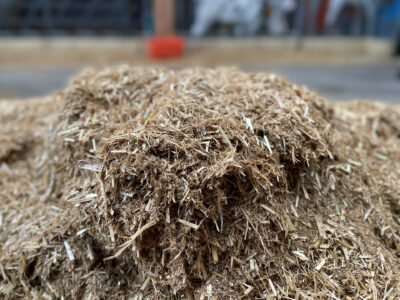
The advantages of dry TMR are obvious:
- The roughage component ensures good rumen growth, salivation and early rumination.
- The concentrated feed component ensures that the rumen villi develop well in the digestion process through short-chain fatty acids.
- It is not possible to separate out individual components. Roughage and concentrated feed are therefore eaten in an optimum ratio.
- In addition, it can be stored for a long time and can be easily prepared.
- It is generally not necessary to offer additional hay or other roughage, at least during the milk-feeding phase, but this can be done in preparation for the transition to the young cattle ration.
Preparing your own dry TMR
Besides ready-mixed products from feed manufacturers, it is relatively easy to prepare TMR rations for calves yourself.
1. Prepare feed analyses
All recommendations made here depend on what feed components are available and their quality. For this reason, it is important to analyse the ingredients of the concentrate components and, where necessary, also to determine the quality of the straw/hay.
When calculating the dry TMR feed mixture, the final product should contain approx. 10 MJ ME/kg and 15-17 % raw protein.
2. Chop straw
The raw fibre component is important here. Straw is most often used. Good meadow hay or alfalfa hay are very suitable. The chopped straw should be approx. 20-30 mm long. Longer structures often cause the finished TMR to separate again or the calves to start selecting.
The straw can, for example, be mixed in the feed mixer until the right length is reached. Care must also be taken to ensure that there is no feed residue in the mixer cart, which could later cause the dry TMR to become fungal.
You can also use bought-in, dedusted straw chaff if it is difficult to achieve the right length of straw or if the straw is too dusty after mixing. It is often sold in pressed plastic bags and can thus be stored in a confined space. In addition, this eliminates the step of crushing in the mixing cart, which can take up to 20 minutes.
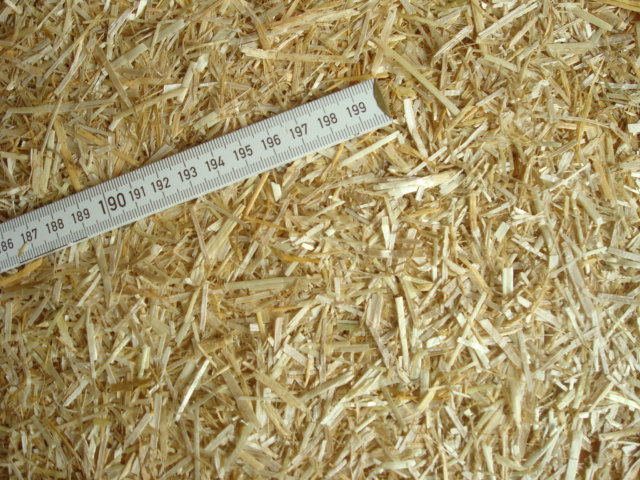
3. Mix straw and molasses
Straw and molasses (molasses content: approx. 5 % of the finished mixture) are then mixed in the feed mixer cart. The purpose of the molasses is to ensure that the concentrate sticks to the straw later on. You can also add approx. 1 % vegetable oil to reduce dust, where necessary. Mixing must continue until it is clear that the liquid components are well dispersed and no lumps are visible.
4. Add concentrate components
The concentrate components are then added to the mixing cart. Depending on the mixing recommendation, you can mix between 20 and 30 percent by weight of straw with the remaining portion of concentrate. In terms of volume, a ratio of 50 % straw and 50 % concentrate has proved successful: one shovel of straw to one shovel of concentrate.
Depending on the mixing concept and mixing feed cart, the finished mixture should only be mixed briefly (a few minutes) until a homogeneous blend is achieved.
5. Storage
A dry TMR (min. 80-90 % dry matter) can be stored for 1-3 months without any problems (of course depending on the quality of the ingredients). Some advisers recommend mixing in milk replacer, for example. However, a mixture of this kind needs to be consumed within a few days.
Storage should be dry and enclosed. This prevents rodents and flies from accessing the feed. For example, cut-open IBC containers with lids or big bags have proven effective.
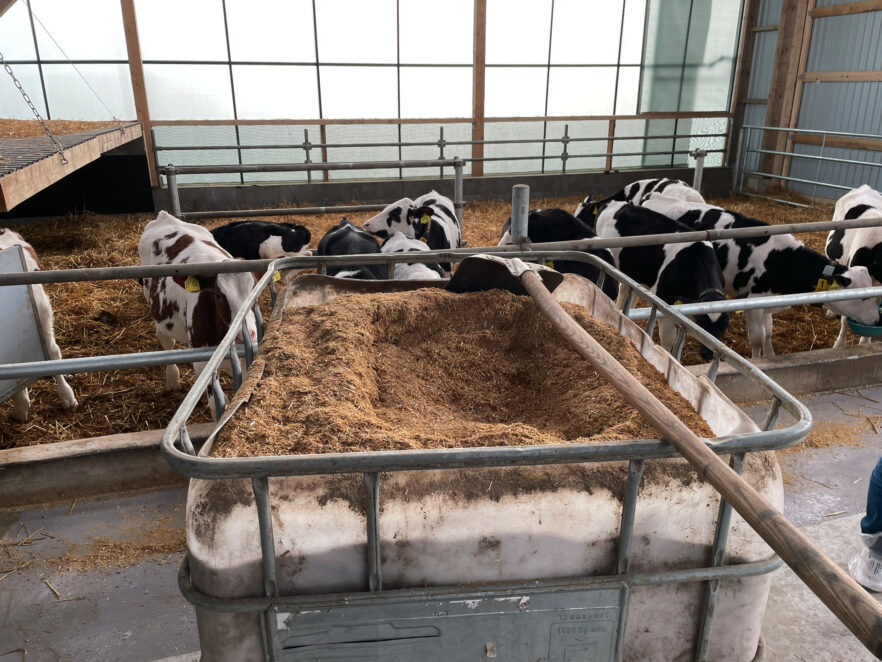
Feeding dry TMR
Dry TMR can be fed in a similar way to pure concentrate. You can start with small amounts as early as the 2nd week of life. Always only as much as a calf eats in a day. The food bowl should be just about empty.
When the calves consume approx. 1.5 - 2 kg, you can start feeding a high-performance cow ration (adjusted to approx. 25 l of milk) if desired. This should be done during the weaning phase or directly afterwards.
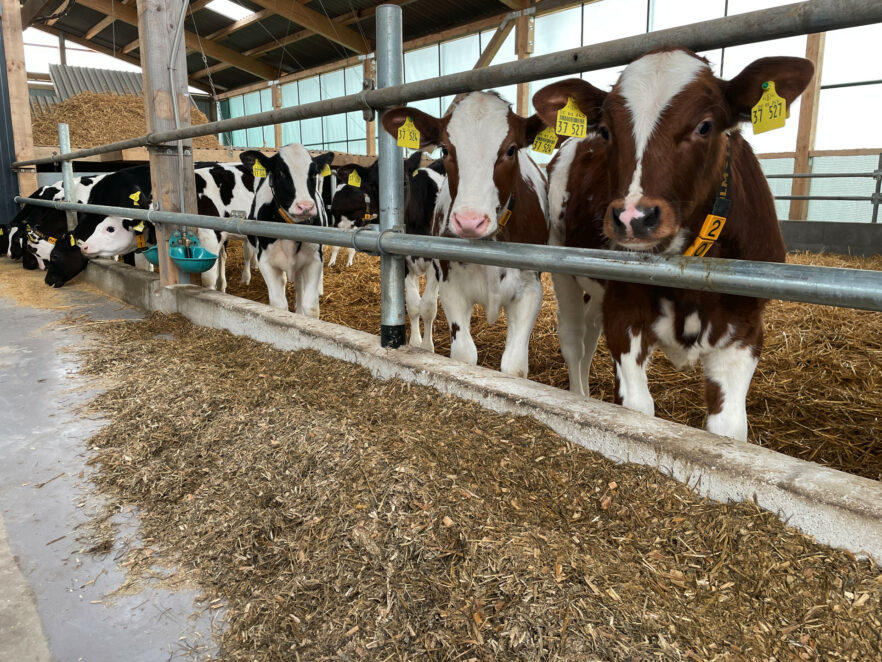
Very often, only dry TMR is fed in the calf pen, perhaps in combination with a hay supply, for work management reasons. This is OK if the calves do not stay in the calf pen for more than 2 weeks. You can then start providing the cows with a high-performance ration in addition to the dry TMR at the latest after they have been moved to the young cattle barn.
When they are 4-5 months old, limit the intake of dry TMR to 3 kg per day. Naturally, the calves' development must always be monitored to check that the weight targets set have been reached. Dry TMR can generally be discontinued as soon as the calves are 6 months old.

